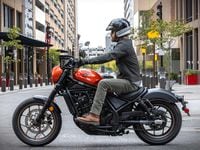Motorcycle locks are like insurance policies: it's better to have one and not need it, than need one and not have it. Bike theft has skyrocketed since 2000, when the custom machine craze was still ramping up. While sport bikes are the likeliest victims, cruisers do fall victim to thievery, particularly H-Ds and customized machines. Some thieves are joyriders, but more often than not they're pros looking to part out a hot ride or export it for profit. One NYPD detective told us Harley-Davidsons end up in places like Italy, Greece, or even the Dominican Republic, where high demand and low supply drive prices up as much as triple the domestic MSRP.
Locking up your bike can be kind of a pain (but not as much of a pain as replacing it). You have to carry the lock and make sure you remember to remove it before you ride off-not to mention that good locks can be a bit pricey (but not as pricey as replacing your bike). We did some digging and unearthed a few tips that may help you avoid this sad situation.
There are three basic ways to lock your bike: on its own using a steering lock or a disc lock to immobilize it; to a stationary object such as a telephone pole or hand rail; or frame-to-frame to another bike when traveling in a group. One thing applies to all three situations: common sense.
Most motorcycles have a fork lock in addition to the ignition but it won't deter someone who really wants your bike. That's why there are disc locks that attach to your brake rotor. They're a pretty cheap investment relative to what you're trying to guard, and while they won't stop a seasoned professional, they tend to discourage your basic low-life jackass looking for a quick joy ride. Disc locks are best for situations where you can't lock up to a stationary object. Short of a pit bull, using multiple locks or a lock and an alarm is the best way to secure a lone bike in a parking lot. Having said all of this, if someone really wants your motorcycle, they will get it. The point of all this security is to make your baby as unattractive to a thief as possible.
Statistically Speaking...
The National Insurance Crime Bureau (NICB) keeps tabs on motorcycle theft in America. According to their statistics:
Over 71,000 motorcycle were reported stolen in 2006 representing a loss of over $440 million.
Motorcycle theft has increased nearly 137% since 2000.
In the U.S., one motorcycle is stolen every 7.4 minutes.
The typical recovery rate of motorcycles is only 25-30%.
Top Ten States for Thievery
Live and ride in the following states? Then your hometown might be popular with bike thieves, according the NICB, as of July 2006.
1 California (9,110)
2 Florida (6,324)
3 Texas (5,755)
4 North Carolina (3,053)
5 Ohio (2,573)
6 Arizona (2,464)
7 New York (2,195)
8 Indiana (2,186)
9 Georgia (2,159)
10 Pennsylvania (2,021)
Locking Up On Your Own
Disc locks like this one from Harley-Davidson are the most basic protection available for motorcycles. They form a pincer over your brake disc to keep the bike from rolling, like a mini version of a tire boot that cops use. They're also small and provide a visible deterrent for would-be thieves. Furthermore, you can carry them in your jacket pocket while riding. If you don't want to shell out for one, though, you can utilize a padlock in the same capacity or, in some cases, through a hole at the steering neck to act like a steering lock. Look toward the high end of the disc lock spectrum and you'll find versions like this Xena XX10 unit. It's a combination lock/alarm to give you both forms of protection in one small, tough package. For optimal protection, though, it should be used in conjunction with a U-lock like this Kryptonite New York M-18NX (MSRP $74.99). On some cruisers you can score bonus points by passing a U-lock through the front wheel and frame. This prevents the bike from rolling forward, limits the turn radius and keeps the lock off of the ground. When locking your bike keep in mind that the ground is a great cutting surface for defeating a lock since it provides leverage. If the lock is off the ground, it's much more difficult to cut. Alarms like Scorpio's SR-i900 (MSRP $379) are yet another option when out on your own. It's a 2-way FM pager/remote system with a programmable siren.
Stationary Object
Try to lock your bike to a stationary object whenever possible. Not only does this help deter a single thief from taking a bike it may also make a group of professional thieves think twice before throwing your bike into a van and driving off with it. It's a good idea to run your lock through the bike frame to the immobile object whenever possible. You may also want to make sure the lock is tight around your bike. Extra slack allows the thief the opportunity to cut or chisel off the lock. Greed and a few tools are all a thief needs to remove your front wheel and toss your bike into a truck, so using the wheel as the sole locking point isn't the best approach.
The Family That Locks Together, Leaves Together
When traveling in a group, locking your bikes together is a good idea. Chain locks, like this one from Abus (MSRP $69.95 or more depending on length and thickness) are best for this since they tend to be large and flexible, allowing the lock to bridge the gap between two parked rides. We looped our chain lock through these bikes' front wheels to keep them secure. Of course, locking one bike to an object and then to your buddy's ride is an even better way to go.
Security System Discounts
If you want to save a few bucks on your insurance, some states give discounts for riders with LoJack (or similar) systems on their bikes. The following is a list of discounts that you may be eligible to receive. For more information, check with your insurance agent.
Arizona: Up to 25%
California: Up to 32%
Colorado: Up to 25%
Connecticut: Up to 25%
Delaware: Up to 25%
District of Columbia: Up to 25%
Florida: Up to 25%
Georgia: Up to 25%
Illinois: Up to 25%
Louisiana: Up to 25%
Massachusetts: Up to 35%
Maryland: Up to 25%
Michigan: Up to 25%
New Jersey: Up to 25%
Nevada: Up to 25%
New Hampshire: Up to 25%
New York: Up to 25%
Pennsylvania: Up to 25%
Rhode Island: Up to 35%
Texas: Up to 30%
Virginia: Up to 25%
12 Tips for Securing Your Scoot
Peace officers in New York, Los Angeles, Dallas and Connecticut were kind enough to take time out of their busy schedules to give us some useful info on what riders can do to better secure their machines.
1 Use common sense. Park your bike in a well-lighted public place.
2 Thieves often target bikes in advance and watch riders to learn their daily routine. Vary your travel route between home and work to throw off a thief 's timing. Be aware of people that seem to be following you. Thieves often use spotters at rallies to find specific bikes that they want to steal. In one instance, a thief in New York was caught and was carrying a Christmas list of American and Japanese bikes in the area that he just hadn't gotten around to stealing.
3 Although thieves will steal bikes from a variety of places, certain places are preferred targets over others. Parking your bike in a home garage is best because the bike is nowhere to be seen, locked up indoors. Subterranean parking garages such as those in apartment complexes seem to attract thieves because most underground parking is easy to break into and people frequently don't lock their bikes when they're home.
4 Secure your garage as well as your bike. Motion sensor alarms and lights can protect not only your bike but the small fortune in tools you have surrounding it. It's also a good idea to lock up any tools in the garage that a thief could use to steal the bike (such as power saws). According to the Los Angeles Police Department, there have been burglaries where the thieves avoided the secured house and robbed the alarm-free garage attached to it.
5 Use locks appropriate to the task. That $5 combination lock may protect your kid's locker at school but it won't work nearly so well on your $30,000 bike. A decent disc lock sells for about $35, large U-locks start at $70. Scooter and bicycle locks are too small to stop a determined thief.
6 Understand what a lock is and what it will do. A bike lock is a deterrent, not a guarantee. Proper bike security is as much about where you park a bike as how you lock it up. Putting it between two cars gives thieves cover while they jack it.
7 Use multiple locks on your bike. The more locked-up a bike is, the longer it takes to steal. Time is valuable currency to a thief. Make him spend a lot of it if he wants to steal your baby.
8 When using a floor anchor, park your bike directly over it and lock the anchor to the frame of the bike. This makes the anchor harder for the thief to reach and therefore harder to defeat.
9 Don't leave excess cable or chain on the ground when locking your bike. This robs thieves of the cutting surface and leverage they need to break the chain.
10 An alarm by itself will not stop a thief from taking your bike. An alarm in conjunction with a lock is better because while the thief is breaking the lock the alarm is alerting everyone within earshot as to what the thief is doing.
11 Don't depend on your ignition lock to protect your bike. Breaking the ignition and stealing the bike is extremely common.
12 Installing a hidden kill switch is a good plan. Locks help prevent thieves from hoisting your bike onto a truck or van, but kill switches offer the added protection of disabling the thief from starting the bike and riding off into the sunset by either disabling the ignition or cutting power to the fuel pump.
And If It's Stolen, Then What?Obviously, if someone makes off with your ride you'll want to get it back. Here are some bits of information that are good to have on hand when you report theft to the cops.
- License plate number
- Make
- Model
- VIN
- Date of purchase
- Identifying marks
- A description of any suspect(s) you may have seen
Contact your insurance company to file a claim within 24 hours of the time when you discovered your motorcycle was stolen. Provide them with a hard copy of the police report or case number. If you have a LoJack system, check that you have the correct information on hand for reporting a theft and then call your local police.
The Dog Days
Be extra vigilant in the summer months and into the fall, as that's when the highest rate of theft is. With everyone out riding their bikes and taking road trips, the number of non-vigilant riders goes up exponentially, making it a fertile ground for thieves.
Lost And Found
If your bike does get stolen, you can register it at stolenmotorcycleregistry.com. Think of it as an online milk carton for lost iron.
Know the Enemy
Thieves use a variety of ways to break locks. Hacksaws and bolt cutters are commonly used for small locks, but require time and effort to break open good locks. Power tools are also used, but while they are more efficient, they're noisy and conspicuous. Deep freezing a lock happens but is rare due to the difficulty and expense involved with obtaining the chemicals. Also, some locks are tested to withstand cold temperatures well below the freezing point of the chemicals used to freeze them. Lock picking is another method, but it requires skill; and if the lock is hard to reach, picking it becomes even more difficult.






























/cloudfront-us-east-1.images.arcpublishing.com/octane/OQVCJOABCFC5NBEF2KIGRCV3XA.jpg)
/cloudfront-us-east-1.images.arcpublishing.com/octane/F3O2DGLA4ZBDJGNVV6T2IUTWK4.jpg)
/cloudfront-us-east-1.images.arcpublishing.com/octane/ZXYQE3MHLFDSPKNGWL7ER5WJ4U.jpg)
/cloudfront-us-east-1.images.arcpublishing.com/octane/RDF24VM7WVCOBPIR3V3R4KS63U.jpg)
/cloudfront-us-east-1.images.arcpublishing.com/octane/W7RSIBFISNHJLIJESSWTEBTZRQ.jpg)
/cloudfront-us-east-1.images.arcpublishing.com/octane/AERA26ENRNBW3K324YWCPEXYKM.jpg)
/cloudfront-us-east-1.images.arcpublishing.com/octane/YWX3YX7QBBHFXFDMEEEKRG4XJE.jpg)
/cloudfront-us-east-1.images.arcpublishing.com/octane/I7OKI53SZNDOBD2QPXV5VW4AR4.jpg)
/cloudfront-us-east-1.images.arcpublishing.com/octane/IH52EK3ZYZEDRD3HI3QAYOQOQY.jpg)
/cloudfront-us-east-1.images.arcpublishing.com/octane/K2FSAN7OWNAXRJBY32DMVINA44.jpg)
/cloudfront-us-east-1.images.arcpublishing.com/octane/G4XK7JL24FCUTKLZWUFVXOSOGE.jpg)
/cloudfront-us-east-1.images.arcpublishing.com/octane/JJNXVAC27ZCDDCMTHTQZTHO55Y.jpg)
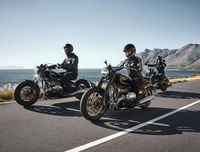

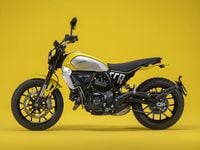

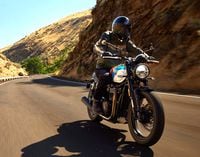
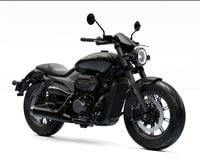

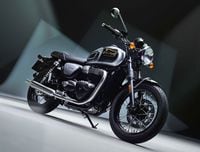

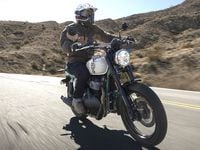
/cloudfront-us-east-1.images.arcpublishing.com/octane/3VSTLPKOHNFTRJTIAAXDPGCPA4.jpg)
